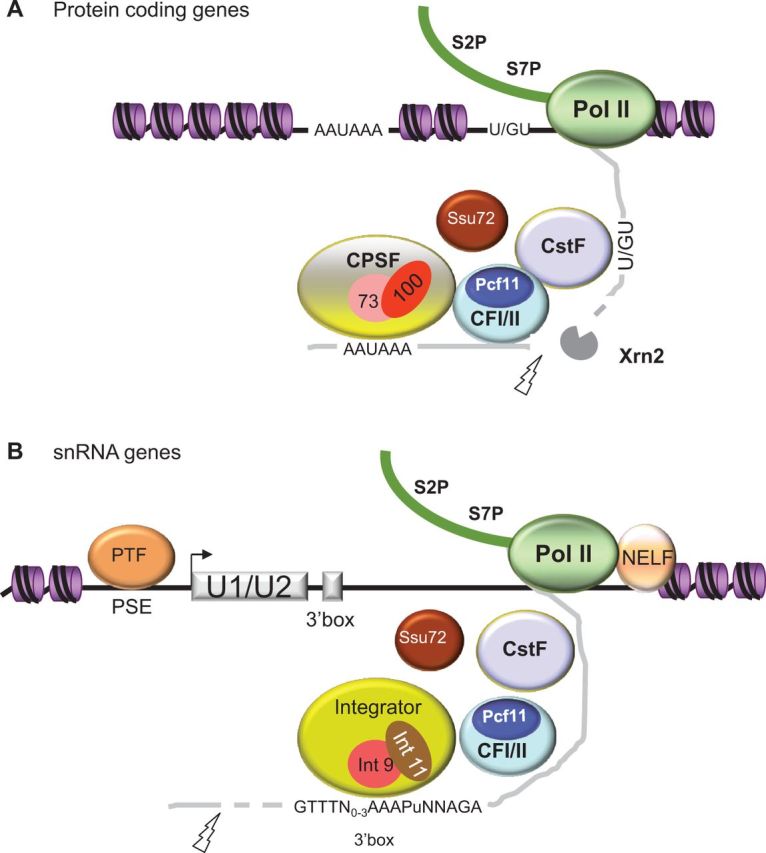Figure 6.

Transcription termination pathways used by pol II transcribing human mRNA and snRNA genes. Termination factors that are common between both genes types are labelled in the same colour. Pol II CTD phosphorylation state is indicated as Phospho-Ser2 (S2P) and Phospho-Ser7 (S7P) (A). For protein-coding genes, the CPSF complex and the CstF complex recognize the poly A signal (AAUAAA) and U/GU-rich elements, respectively, as they emerge from the elongation complex. The CPSF-73 subunit, aided by CPSF-100, catalyzes cleavage at the poly A site (indicated by a lightning bolt) creating an entry site for the 5′–3′ exoribonuclease, Xrn2. Xrn2 degrades the downstream RNA product and displaces pol II. The CTD interacting domain of Pcf11 associates with the S2P form of the pol II CTD and bridges the polymerase with the nascent transcript, leading to pol II pausing and dismantling of the elongation complex. (B) The gene-specific PTF complex is recruited to the snRNA promoter and clears the transcription unit of nucleosomes to facilitate passage of pol II. The NELF complex is recruited at the end of the nucleosome-depleted region to terminate pol II where nucleosomes are encountered. CPSF-73 is not recruited to human snRNA genes but instead the Integrator complex directs cleavage upstream of the 3′ box processing element (indicated by a lightning bolt). The Int11 subunit is likely to catalyze the cleavage reaction with the help of Int9, as these subunits are homologous to CPSF-73 and CPSF-100, respectively. Thus, Integrator substitutes for the CPSF complex on snRNA genes. Ssu72 and Pcf11 are recruited to snRNA genes but do not have a major function in snRNA 3′-end processing. Instead, Ssu72 and Pcf11 act as transcription terminators for this gene class. CstF64 is also recruited, but its role in snRNA processing and transcription termination is not clear. Xrn2 is not implicated in snRNA transcription termination, but as cleavage upstream of the 3′ box would create an entry site for a 5′–3′ exoribonuclease, we cannot rule out that an alternative enzyme is recruited to promote termination.
